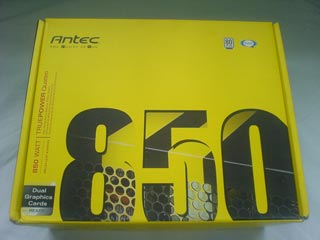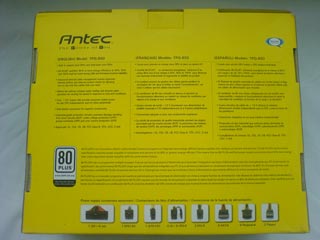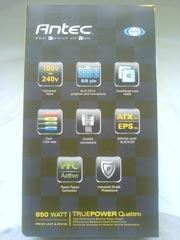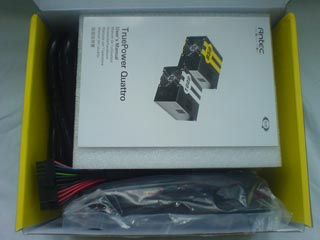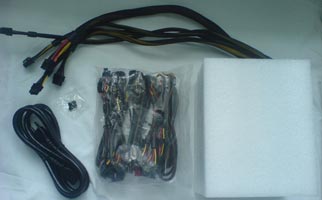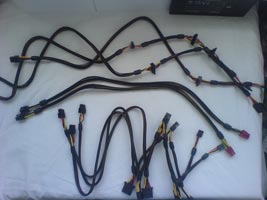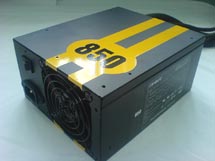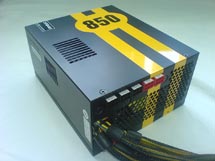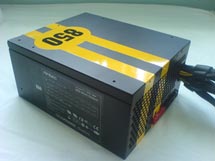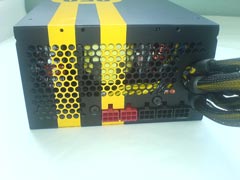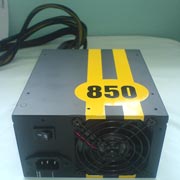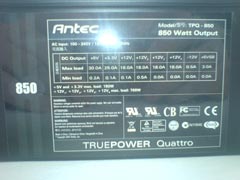|
Antec TruePower Quattro 850W

Packaging
The packaging definitely stands out and is among the more appealing compared to other power supply boxes. The yellow packaging definitely stands out among others, with a nice and simple design on the front of the box it is eye-catching.
On the back of the packaging is a list of features and specifications printed in English, Spanish, and French. Located on the bottom of the back panel is the list of connectors that are offered, this is good for those who are looking for particular things and want to know what is included. Also the 80 Plus sticker definitely sticks out and lets you know that it is an efficient power supply. Located on the side of the packaging is a small list of features that are offered. These are not the same as what is printed on the back.
Upon opening the box, you first see that the power supply itself is enclosed in a foam container with the wiring located between the power supply and the edge of the box. The manual included in the 850 watt model is identical to the one included in the 1000 watt model. Included in the box is the obvious power supply, modular cables, power cable, bag of screws, and the instruction manual.
The sleeved modular cables included help to give your system a clean and professional look. Each of the cables are long enough for even the farthest of components
A Closer Look
The first thing that you notice about the power supply as you pull it out of the packaging is the racing stripes. As these may not be necessary, they are a definite eye catcher. Why not show off and let everyone know that this power supply is among the top. When it comes to power supplies, they are all practically built the same, as they all are in a rectangle box with the wires and plugs in the same place. The stuff that makes this Antec TruePower Quattro any different is the locations of its vents, its modularity, and obviously the racing stripes.
"The Active PFC design and 80 mm low noise fan provide reduced vibration, lower noise emission, efficient cooling, and incredibly enhanced performance."( newegg )
As like most top notched power supplies, this comes with modular cabling. This helps to prevent a clutter of wires in your computer and most of all makes the installation that much easier. As most of the wires are modular, not all of them are, the cables that are not are the main 24pin, 8pin +12V, 8pin PCI Express, and 4pin +12v connectors. The reason why these are not modular, is because they are essential cables that most everyone have to use, and because they are hard wired to the power supply itself and don't go though a plug, it has a much higher connectivity which helps to provide the best power transfer.
Below you can see the list of connectors that come included with the Antec TruePower Quattro 850Watt Power Supply. These included most of your basics plus a few extra. With one motherboard connector (20 + 4 pin), one 12V (4-pin), one 12V (8-pin), nine Molex, eight SATA, two floppy, and four PCI-E (2 x 6-pin, 2 x 8-pin) connectors you should be able to supply power to all of your peripherals without any problems.

Below are the model number and relating UPC# for both models of the Antec TruePower Quattro. As you see it comes in both a 850 watt series and a 1000 watt series.
Model |
UPC# |
Quattro 850 |
0761345-27850-8 |
Quattro 1000 |
0761345-27100-4 |





